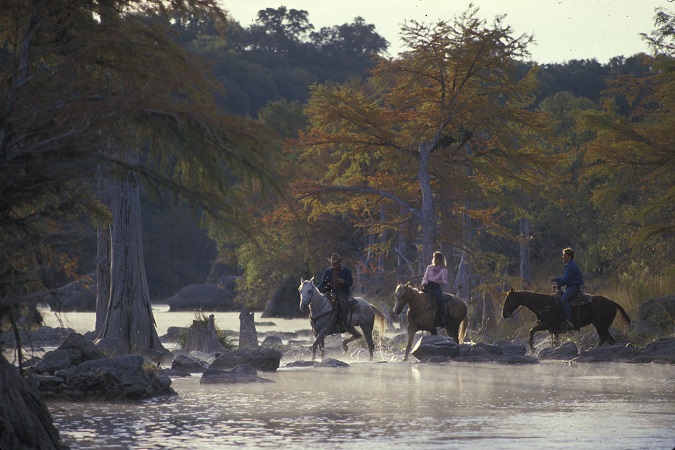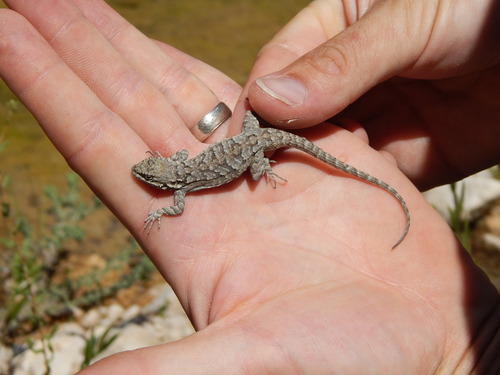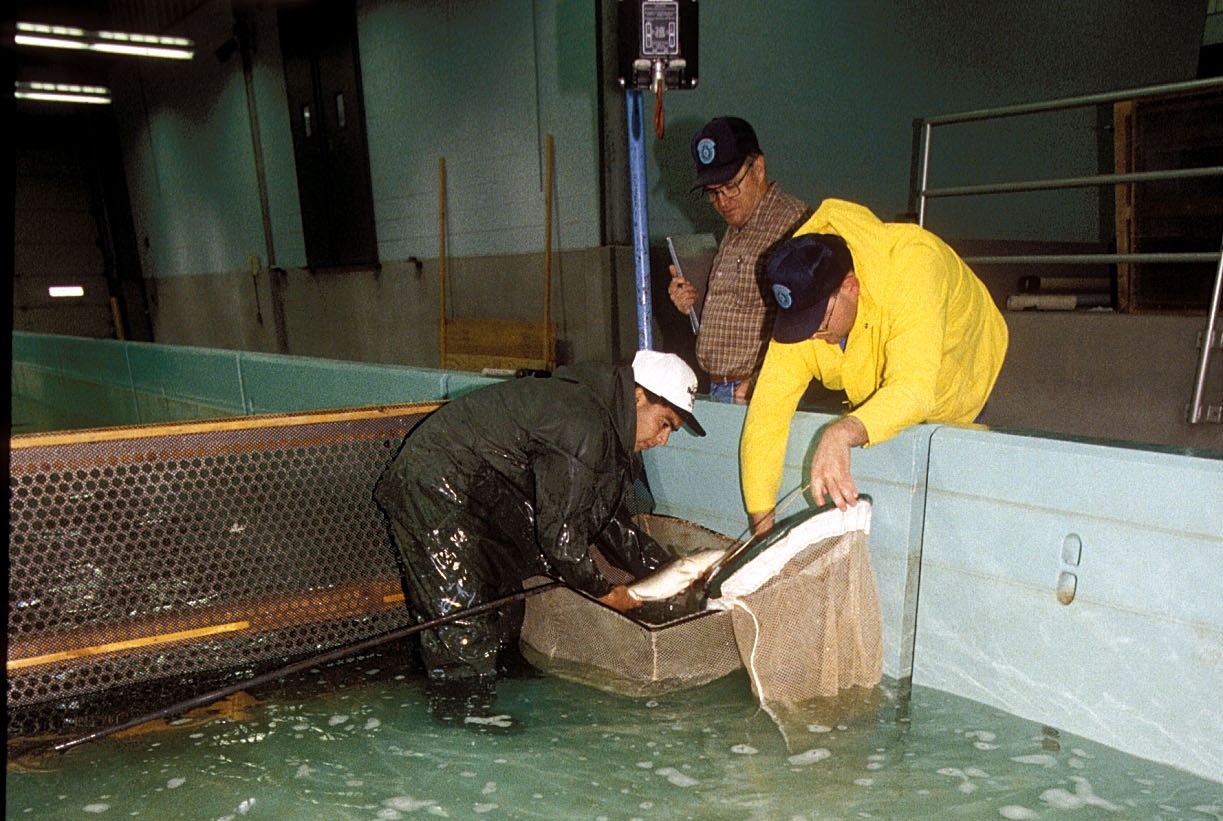January 9th, 2014

Trail Riding
This is Passport to Texas
While driving a gas powered vehicle is the way most of us enter a state park. Barbara McKnight says once inside, you can see more of the natural beauty of your surroundings on hay power.
17—Something about riding a horse…looking at things is so much better. You’re more likely to see wildlife. We see bobcats and other things that will hear the engine of a car or smell it and they’ll leave.
As a member of the Texas Equestrian Trail Riders Association, McKinight says state parks offer the perfect opportunity for exploring while on horseback. But before you hit the trail, there are a few safety precautions you need to be aware of…
18—The horse you want for trail riding needs to be completely unflappable, things shouldn’t scare it. It should be brave about walking up a hill, through water and over bridges. And the main thing you need to be sure and understand that horse and know how to control it.
Keep in mind horses are not allowed be ridden in the park until a Coggins test is verified at the park office during office hours.
Find a listing of state parks with equestrian facilities on the Texas Parks and Wildlife web site.
[Happy Trails to You — music]
That’s our show…Funding provided in part by Ram Trucks. Guts. Glory. Ram…
For Texas Parks and Wildlife…I’m Cecilia Nasti.
Posted in State Parks | Comments Off on Nature: Trail Riding
January 8th, 2014

Big Bend Tree Lizard, image by Michael Smith
This is Passport to Texas
Herpetology is a branch of zoology concerned with amphibians and reptiles.
16—Amphibians are the species that are associated with water in their lifecycle. [They’re] smooth skinned, and usually lay their eggs in water and often have a larval stage such as a tadpole for a frog. So frogs, salamanders, and an interesting creature called the caecilian are amphibians.
Leeann Linam is a biologist who recently retired from Parks and Wildlife. Reptiles are those species with scales that tend to lay hard-shelled eggs on land in dry nests.
13—And so we have several divisions of reptiles as well. We have the turtles, we have the lizards, and we have the snakes… And then there are a few other groups. The crocodilians and some others that are kind of unique.
Linam says scientists agree they need to give reptiles more consideration.
14—Lizards are a group of organisms that scientists have said: “You know, we really haven’t paid much attention to what’s going on with them. They are mostly eating insects in the environment, and so one can perhaps think of them as being sensitive to things like pesticides and habitat loss, as well as
direct persecution, or killing, as areas are changed in terms of their use.”
Before you spray or spread a pesticide on your lawn or garden, think of the lizards.
That’s our show with support from the wildlife restoration program…For Texas Parks and Wildlife…I’m Cecilia Nasti.
Posted in Wildlife | Comments Off on Wildlife: Herpetology
January 7th, 2014

Caprock Canyon in Winter
This is Passport to Texas
Cold temperatures and strong winds increase the risk of hypothermia when outdoors this winter. It’s a potentially serious condition whereby the body’s core temperature drops below normal.
Dorian Drigalla (Dre-gal-a) is an assistant professor of emergency medicine at Scott and White Memorial Hospital with tips on combating this condition.
51—The first thing to try to do is to get the patient to the warmest possible environment, whether that be getting them out of the wind or out of the water. So the first two things to be concerned about on a hike or in the wilderness are basically to remove everything possible wet, get the patient dry and try and get them into a warmer environment. Even if that just means out of the wind behind shelter even of a hillside. Then you want to try additional measures, whether that’s using insulating materials like a sleeping bag or dry clothing to warm the patient and also ingestion of warm liquids can help. If the person is cold and they’re already in water, the water between them and their clothing is actually insulating. The heat is conducted out of the body and into the water but it’s maintained between them and their clothing. And it’s only if those clothes can come off and all the water can be removed that that’s actually helpful.
That’s our show…Funding provided in part by Ram Trucks. Guts. Glory. Ram.
For Texas Parks and Wildlife…I’m Cecilia Nasti.
Posted in Education | Comments Off on Outdoor Safety: Treating Hypothermia
January 6th, 2014

Caprock Canyon in Winter
This is Passport to Texas
Winter weather never kept a Texan from enjoying the great outdoors. Even so – everyone needs to exercise caution in the cold to prevent hypothermia.
Dorian Drigalla (Dre-gal-a) is an assistant professor of Emergency Medicine at Scott and White Memorial Hospital.
09—Hypothermia is a condition where the body’s temperature drops below normal and certain physiologic changes happen the body because of that.
There are three stages of hypothermia that determine the severity.
41—Stage one, or mild hypothermia, is when the body’s temperature drops from what is considered normal down between 1 and 3 degrees below that. Stage two – becomes a little bit more obvious in that the person starts to realize they are more than just cold and while they are still conscious, they do realize that they are shivering more, the shivering becomes more noticeable and the rest of the body’s movements are less coordinated. It’s at this point that the body starts to appear more pale. Stage three is when the body temperature drops below ninety degrees. At this point, the body’s reflexes start to fail, the shivering intended in the prior two stages to help warm the body starts to fail. Concentration, speaking and thinking become more difficult.
Severe hypothermia can lead to organ failure and death.
Backcountry treatment of hypothermia tomorrow
That’s our show…Funding provided in part by Ram Trucks. Guts. Glory. Ram…For Texas Parks and Wildlife…I’m Cecilia Nasti.
Posted in Education | Comments Off on Outdoor Safety: Hypothermia
January 3rd, 2014

A.E. Wood Fish Hatchery
This is Passport to Texas
04—It’s definitely high tech, cutting edge…we’re really happy to have it.
Lorraine Fries is talking about a DNA Analyzer – a high tech piece of equipment used at the A.E. Wood laboratory in San Marcos. Ms. Fries was the site’s lab director before retiring. Researchers use the analyzer to “fingerprint” hatchery raised fish.
14—We also can use the DNA analyzer for selective breeding programs. We can identify markers associated with traits that we’re interested in and breed for those. We can use it to evaluate stocking success because we can tell what fish we stock.
They do that by simply analyzing a small piece of tissue from the animal.
10—One of the other really great things about DNA is that it’s in all tissues.
Which means by taking a very small piece of fin, for example, researchers obtain as much DNA as needed. Before the analyzer, Fries says they performed liver biopsies on the fish.
04—Which is okay, but the fish don’t like it too well. (laughter)
Understanding fish genetics allows fisheries biologists to improve fisheries.
The Sport Fish Restoration Program supports our series and funds fishery operations in Texas. For Texas Parks and Wildlife…I’m Cecilia Nasti.
Posted in Fishing | Comments Off on Wildlife/Angling: Fish Genetics






 Passport to Texas is a
Passport to Texas is a  Passport to Texas is made available by:
Passport to Texas is made available by: